The addition of vegetables provides essential nutrients, beneficial phytonutrients, soluble and insoluble fiber to a raw diet for dogs. Vegetables prove useful to complete nutritional holes in diets without the frequent use of whole prey. It is recommended to provide 10-20% vegetables in raw BARF (Biologically Appropriate Raw Food) model diets.
Vegetables provide a variety of nutrients and benefits to raw diets for dogs. There are multiple types of carbohydrates and each type provides different benefits to dogs.
Carbohydrates
The carbohydrate macronutrient include starches, fiber, and sugars.
Phytonutrients
Vegetables provide beneficial phytonutrients to support optimal health.
Low Glycemic Vegetables
Low glycemic vegetables do not contain starches but are high in fiber.
Starchy Vegetables
Starchy carbohydrates have higher amounts of sugar to supply the body with energy.
Although dogs do not require vegetables for essential nutrients, adding plant ingredients to raw diets proves beneficial. Since dogs lack the jaw structure to grind plant matter and the salivary enzymes to begin carbohydrate digestion in the mouth, all vegetables must be prepared for optimal digestion and nutrient absorption.

Carbohydrates
There are three major macronutrients in food: protein, fat, and carbohydrates. The term carbohydrate is all encompassing of different carbohydrate types such as starch, fiber, and sugar.
Fiber
Fiber is a type of carbohydrate that is resistant to enzymatic digestion in the stomach and small intestine. The fiber is transported to the colon where it is fermented by the intestinal flora. Fiber fermentation promotes the creation of Short Chain Fatty Acids (SCFAs) which is ideal for maintaining a healthy colon. Additionally, this fiber fermentation promotes the synthesization of vitamin K!
Starch
Starch is a complex carbohydrate consisting of a large number of glucose units joined by glycosidic bonds. Starch is metabolized into individual glucose molecules after enzymatic digestion and is used as a source of energy. In order for starches to be enzymatically digested and utilized for energy, they must be thoroughly cooked prior to feeding. Otherwise the starch becomes resistant to enzymatic digestion and is fermented in the colon.
Sugar
Sugar is another form of carbohydrate and it is present in many forms, including glucose. Sugar is naturally occurring in vegetables but the concentration of sugar is dependent on the type of vegetable. In general, starchy vegetables have higher sugar levels than low glycemic vegetables.
Since fiber is resistant to enzymatic digestion, fiber amounts are subtracted from the total amount of carbohydrates listed for the vegetable ingredient to provide the NET carb content.
Raw Spinach, 100 grams
Carbohydrates: 1.1 grams
Fiber: 0.7 grams
Starches: 0 grams
Sugars: 0.1 grams
1.1 grams total carbohydrates – 0.7 grams of fiber =
0.4 grams NET Carbohydrates
Phytonutrients
Phytonutrients are chemical compounds naturally created by plants to ward off predators, parasites, and disease. These nutrients are not considered essential nutrients for optimal health. However, phytochemicals help maintain optimal canine health and are beneficial for specific conditions.
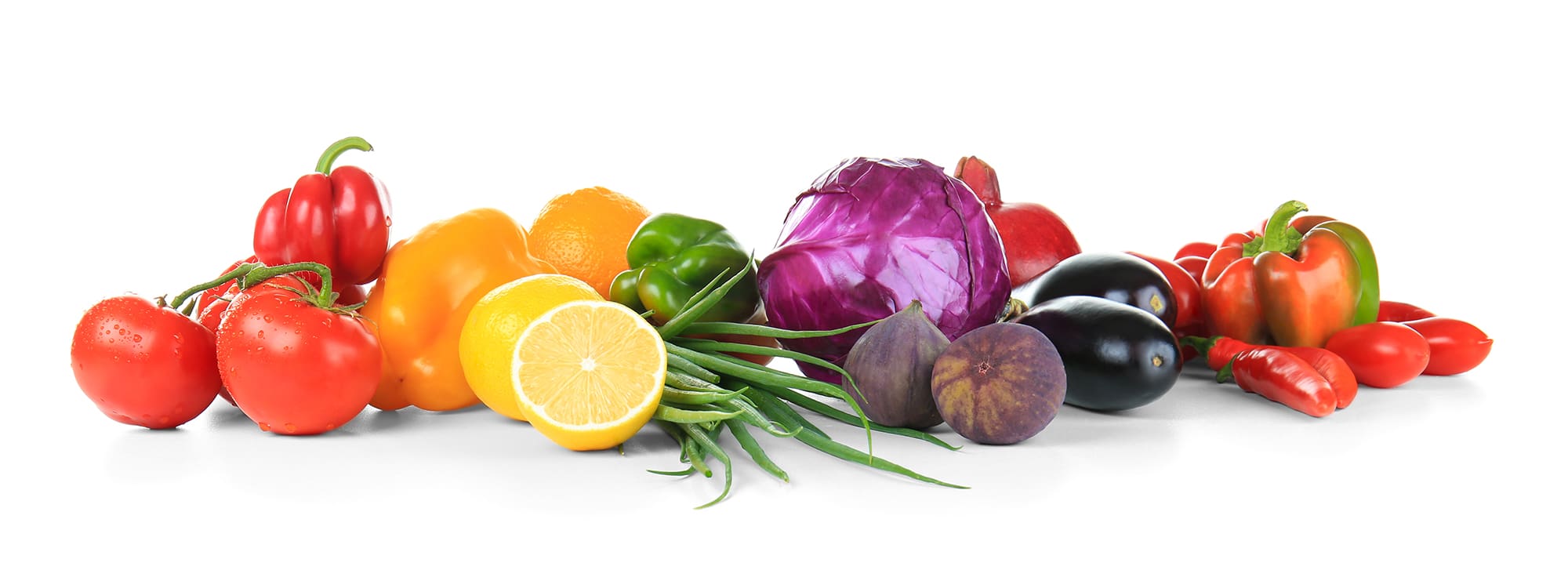
Feed the Rainbow
Vegetables deeply pigmented in vibrant colors contain beneficial phytonutrients. The five shades of the rainbow provide a specific type of phytonutrient within each color group.
Red
The bright and vibrant red hue of many vegetables is due to lycopene and anthocyanins. Both are powerful carotenoids known for their anti-inflammatory and antioxidant benefits against free radicals. Options include tomatoes, red bell pepper, and radishes.
Orange & Yellow
Beta-carotene is another widely studied carotenoid found in yellow and orange pigmented vegetables. Beta-carotene is a precursor to Vitamin A as the body must convert it to retinol, it’s usable form in the body. However, dogs have a very low conversion rate and cats are unable to convert beta-carotene to retinol. Options include carrots, sweet potato, winter squash, summer squash, and yellow/orange sweet peppers.
Green
Green fruits and vegetables are rich in lutein, isothiocyanates, and isoflavones. Dark leafy greens, such as kale, contain over 50 phytonutrients including kaempferol and quercetin. Kaempferol is an antioxidant shown to protect the body against cancer-promoting free radicals and quercetin is an antioxidant flavonoid also shown to protect the body against free radicals. Options include kale, spinach, chard, asparagus, broccoli, snap beans, zucchini, avocado, bok choy, and cucumber.
Blue & Purple
Blue and purple produce are rich in phytonutrients, including anthocyanins and resveratrol, and have been studied extensively for their anti-cancer and anti-aging properties. Anthocyanins act as a powerful antioxidant protecting cells from damage. Many red and pink vegetables are also rich in anthocyanins; but the darker the blue/purple hue, the higher the phytochemical concentration. Options include beets, chard stems, and eggplant.
White
White and brown produce may not be deeply pigmented in vibrant colors as other vegetables, but they still have phytonutrients. Like broccoli, cauliflower is a cruciferous vegetable rich in an anti-cancer compound called sulforaphane. Garlic is in the allium family of vegetables where it contains the powerful anti-microbial compounds from allicin and anti-inflammatory compounds from quercetin. Options include garlic, mushrooms, ginger, turnip, and cauliflower.
Low Glycemic Vegetables
The Glycemic Index (GI) is a ranking of carbohydrate foods according to how they affect blood glucose levels. Vegetables with a low GI value (55 or less) are more slowly digested, absorbed, and metabolized. Low glycemic vegetables cause a lower and slower rise in blood glucose, which means lower insulin levels.
Low glycemic vegetables are beneficial for many of their phytonutrient benefits as well as the addition of fiber. Many raw diets are lacking fiber which promotes a healthy colon and firm stool consistency.
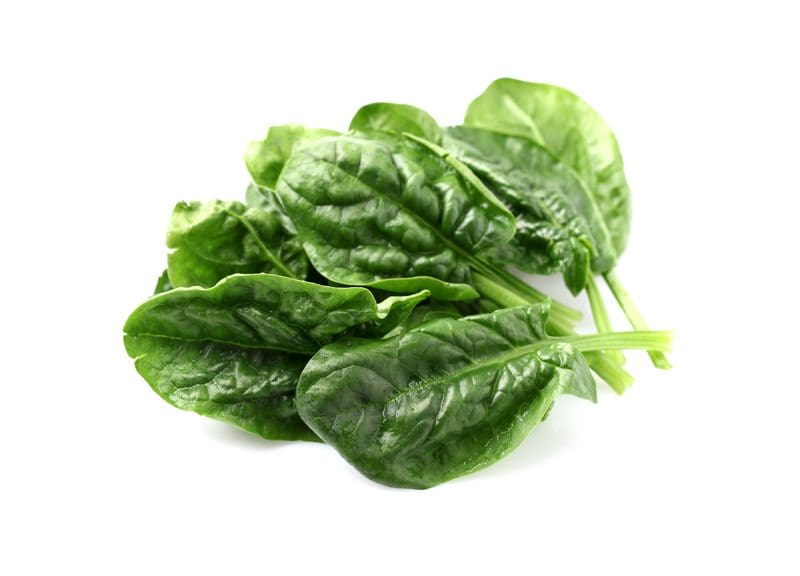
Spinach
One of the most common leafy greens incorporated in raw diets is spinach. Spinach is high in fiber, low in carbohydrates, and does not have any starch or sugar. This leafy green is high in magnesium, folate, and manganese.
Spinach Nutritional Data
Macronutrients
The amount of calories, protein, fat, and carbs are based on 1oz (28g).
| Moisture | 91% |
| Protein | 2.8% |
| Fat | 0.3% |
| NET Carbohydrate | 1.4% |
| Fiber | 2.2% |
Top Nutrients
The top nutrients are based on 1oz (28g) of raw spinach.
| Folic Acid | 55 mcg |
| Vitamin A | 133 mcg |
| Vitamin K | 136.9 mcg |
| Manganese | 0.25 mg |
| Potassium | 158 mg |
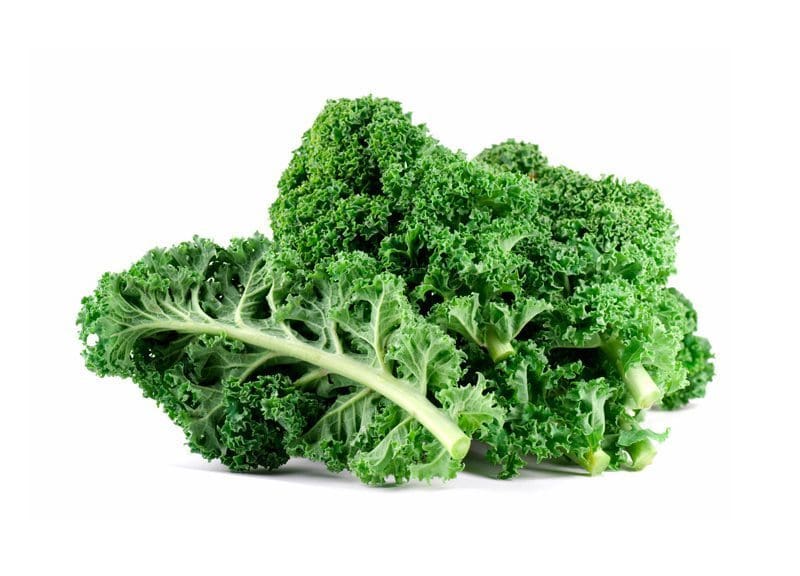
Kale
Another nutritious leafy green high in fiber, low in carbohydrates, and has zero starches and sugar is kale. This vegetable is jam-packed with beneficial phytonutrients as well as essential nutrients beneficial for optimal health. Kale is high in Vitamin K, folate, and Vitamin C.
Kale Nutritional Data
Macronutrients
The amount of calories, protein, fat, and carbs are based on 1oz (28g).
| Moisture | 89.6% |
| Protein | 2.9% |
| Fat | 1.5% |
| NET Carbohydrate | 0.3% |
| Fiber | 4.1% |
Top Nutrients
The top nutrients are based on 1oz (28g) of raw kale.
| Vitamin K | 110.5 mcg |
| Vitamin A | 68 mcg |
| Copper | 0.02 mg |
| Vitamin B6 | 0.04 mg |
| Manganese | 0.26 mg |
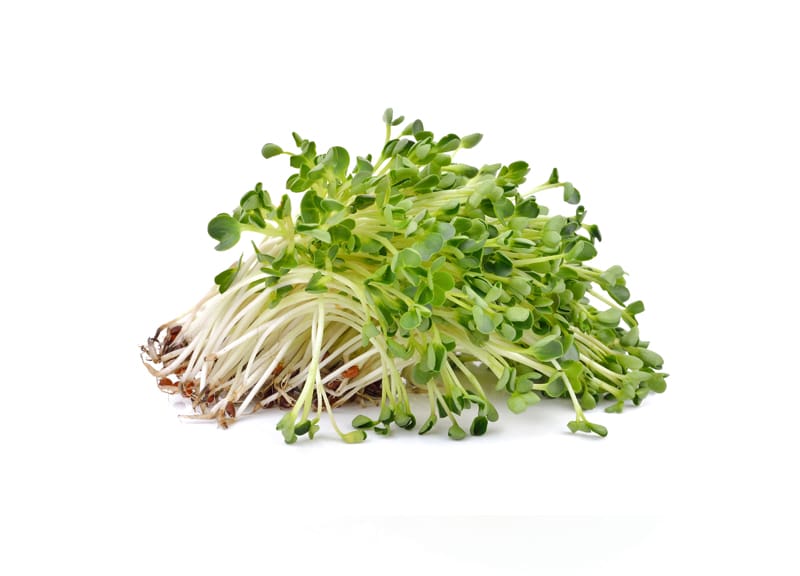
Microgreens
Microgreens from a variety of seeds are highly nutritious and are not to be confused with sprouts. Microgreens are young green vegetables approximately 1-3 inches tall harvested between 7 and 21 days of germination. Whereas sprouts are freshly germinated seeds that do not have any green leaves. Microgreens’ nutrient content is concentrated, which means they often contain higher vitamin, mineral, and antioxidant levels than the same quantity of mature greens.
Alfalfa Sprout Nutritional Data
Macronutrients
The amount of calories, protein, fat, and carbs are based on 1oz (28g).
| Moisture | 92.8% |
| Protein | 4% |
| Fat | 0.7% |
| NET Carbohydrate | 0.2% |
| Fiber | 1.9% |
Top Nutrients
The top nutrients are based on 1oz (28g) of sprouted alfalfa seeds.
| Folic Acid | 10 mcg |
| Vitamin B5 | 0.16 mg |
| Manganese | 0.05 mg |
| Vitamin B1 | 0.02 mg |
| Iron | 0.27 mg |
Variety Options
There are many other dog-safe, low glycemic vegetables. The ones listed above are examples of common low glycemic vegetables found in a local supermarket, but other leafy greens can be used for more variety in raw diets.
Starchy Vegetables
Starchy vegetables are complex carbohydrates containing starch units which ultimately means a higher glycemic index. They have the potential to raise blood glucose at a faster rate and are also higher in calories than non-starchy vegetables.
Lower fat diets require an additional energy source and starchy vegetables prove useful for dogs who cannot tolerate high-fat diets. Starch is metabolized into glucose for the body to utilize as a source of energy when high fats cannot be fed.
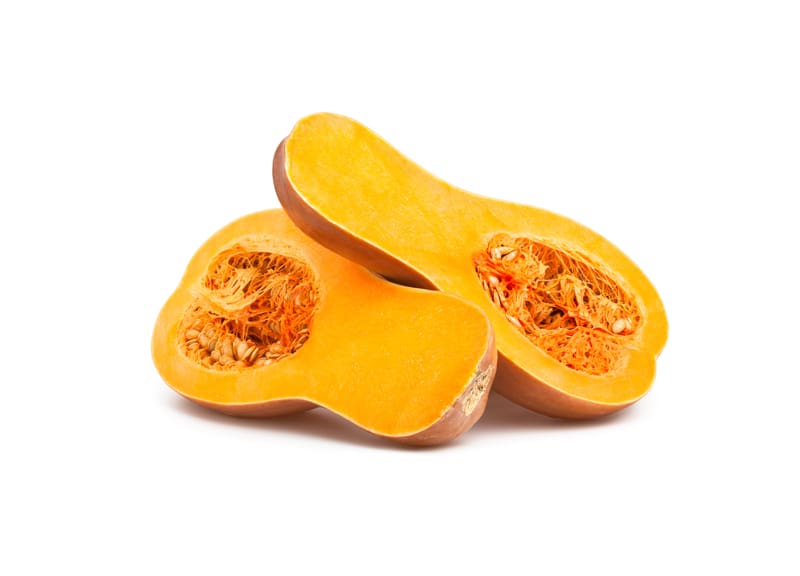
Butternut Squash
Winter squash such as Butternut Squash has a low glycemic index in comparison to other starchy vegetables. Although its GI is lower than 55, Butternut Squash does contain higher amounts of sugar and carbohydrates in comparison to leafy greens.
Butternut Squash Nutritional Data
Macronutrients
The amount of calories, protein, fat, and carbs are based on 1oz (28g).
| Moisture | 87.8% |
| Protein | 0.9% |
| Fat | 0.09% |
| NET Carbohydrate | 7.29% |
| Fiber | 3.2% |
| Glycemic Index | 51 |
Top Nutrients
The top nutrients are based on 1oz (28g) of fully cooked butternut squash.
| Vitamin A | 158 mcg |
| Vitamin B6 | 0.03 mg |
| Folic Acid | 5 mcg |
| Vitamin B3 | 0.27 mg |
| Vitamin E | 0.37 mg |
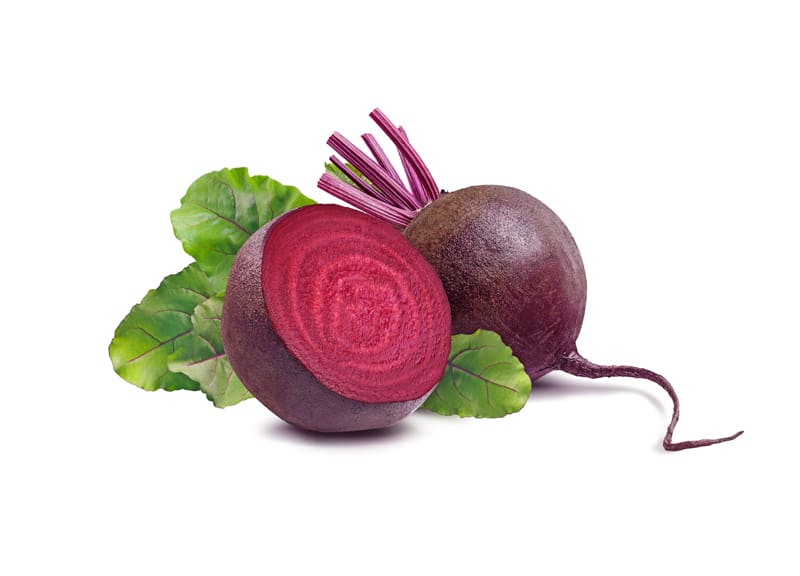
Beets
Beet Nutritional Data
Macronutrients
The amount of calories, protein, fat, and carbs are based on 1oz (28g).
| Moisture | 87% |
| Protein | 1.7% |
| Fat | 0.2% |
| NET Carbohydrate | 7.96% |
| Fiber | 2% |
| Glycemic Index | 64 |
Top Nutrients
The top nutrients are based on 1oz (28g) of fully cooked beets.
| Folic Acid | 23 mcg |
| Sodium | 22 mg |
| Chloride | 22 mg |
| Potassium | 86 mg |
| Manganese | 0.09 mg |
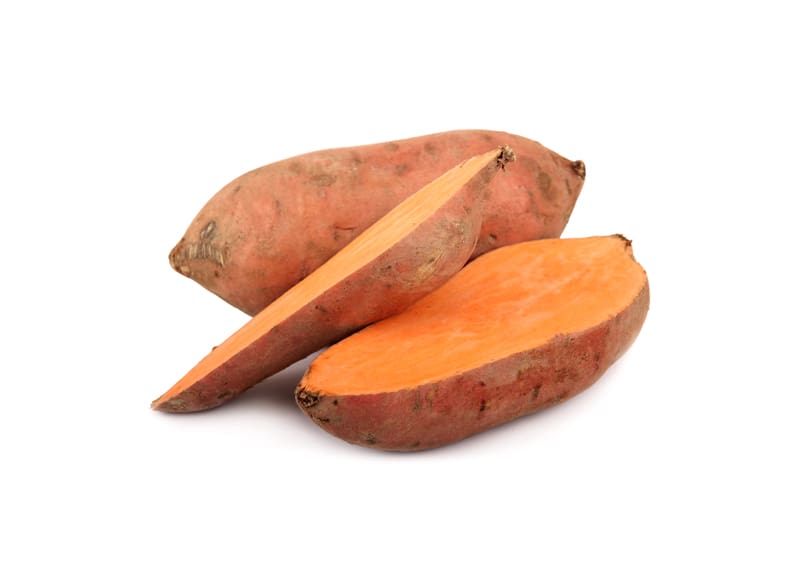
Sweet Potato
Sweet potatoes are high on the glycemic index chart due to the amount of starches present. Do not feed this starchy vegetable raw due to the presence of trypsin inhibitors which negatively affects protein digestion. Fully cooking sweet potatoes eliminates this risk.
Sweet Potato Nutritional Data
Macronutrients
The amount of calories, protein, fat, and carbs are based on 1oz (28g).
| Moisture | 80% |
| Protein | 1.4% |
| Fat | 0.14% |
| NET Carbohydrate | 15.22% |
| Fiber | 2.5% |
| Glycemic Index | 94 |
Top Nutrients
The top nutrients are based on 1oz (28g) of fully cooked sweet potato.
| Vitamin A | 223 mcg |
| Vitamin B6 | 0.047 mg |
| Potassium | 65 mg |
| Manganese | 0.07 mg |
| Vitamin B5 | 0.16 mg |
Variety Options
There are many other dog-safe, starchy vegetables. The ones listed above are examples of common starchy vegetables found in a local supermarket, but other complex carbohydrates can be used for more variety in raw diets.
Preparation Methods
Carnivores do not have the essential tools to properly breakdown and digest plant matter in comparison to omnivores. Dogs do not have salivary enzymes to start carbohydrate digestion in their mouth and their jaw structure does not allow grinding motions to pulverize plant ingredients through chewing.
However, dogs do produce pancreatic enzymes for carbohydrate and starch digestion. Since dogs are unable to grind plant ingredients in their mouth and do not produce salivary enzymes to begin starch digestion in their mouth, it is recommended to process vegetables to allow for optimal enzymatic digestion. Puree, ferment, steam, or boil vegetables for optimal digestion and nutrient absorption.
Raw vegetables that are not processed for optimal digestion resists enzymatic digestion and are passed in the stool as waste.
Puree Raw
A veggie blend is an easy way to prepare all vegetables, seeds, and fruit into a single mixture to portion into meals. The veggie blend can then be stored in containers for scoop and feed, or the blend can be portioned into frozen serving sizes. Silicone molds or ice cube trays are excellent methods for frozen veggie cubes which provide an easy prep option. Many raw feeders use silicone paw print or bone molds.
Ferment
Fermented foods is a way to provide naturally occurring probiotics through fresh food versus man-made supplements. Fermented veggies provide soil-based probiotics and digestive enzymes jam-packed in the “predigested” plant material. Dogs not only benefit from beneficial bacteria to support healthy gut flora, but the act of fermenting also enhances the nutrients in vegetables and the nutrients become more bioavailable for absorption.
Steam, Bake, or Boil
Starchy vegetables must be fully cooked prior to feeding in order for dogs to get the benefit of the nutrients and glucose for energy. There are multiple methods that can be used to cook starchy vegetables. Baking, boiling, and steaming are three methods to cook starchy vegetables. The method selected does not matter as long as the vegetable is thoroughly cooked prior to feeding.
CLOSING COMMENTS
Phytonutrients
Beneficial phytonutrients help fight against free radicals, inflammation, aging, and even cancer!
Fiber
The addition of fiber-based foods helps regulate stools, promotes a healthy colon, and produces SCFAs and Vitamin K.
Energy
Starchy vegetables are a beneficial addition to low-fat diets to provide an alternate source of energy when high fats are not tolerated.
Adding a small amount of deeply pigmented vegetables, prepared for optimal digestion, to a dog’s diet is recommended for multiple reasons. While dogs do not require vegetables to have a balanced diet, vegetables prove useful in diet formulation to ensure the diet includes all essential nutrients. Additionally, vegetables provide other benefits outside of their nutritional content.
